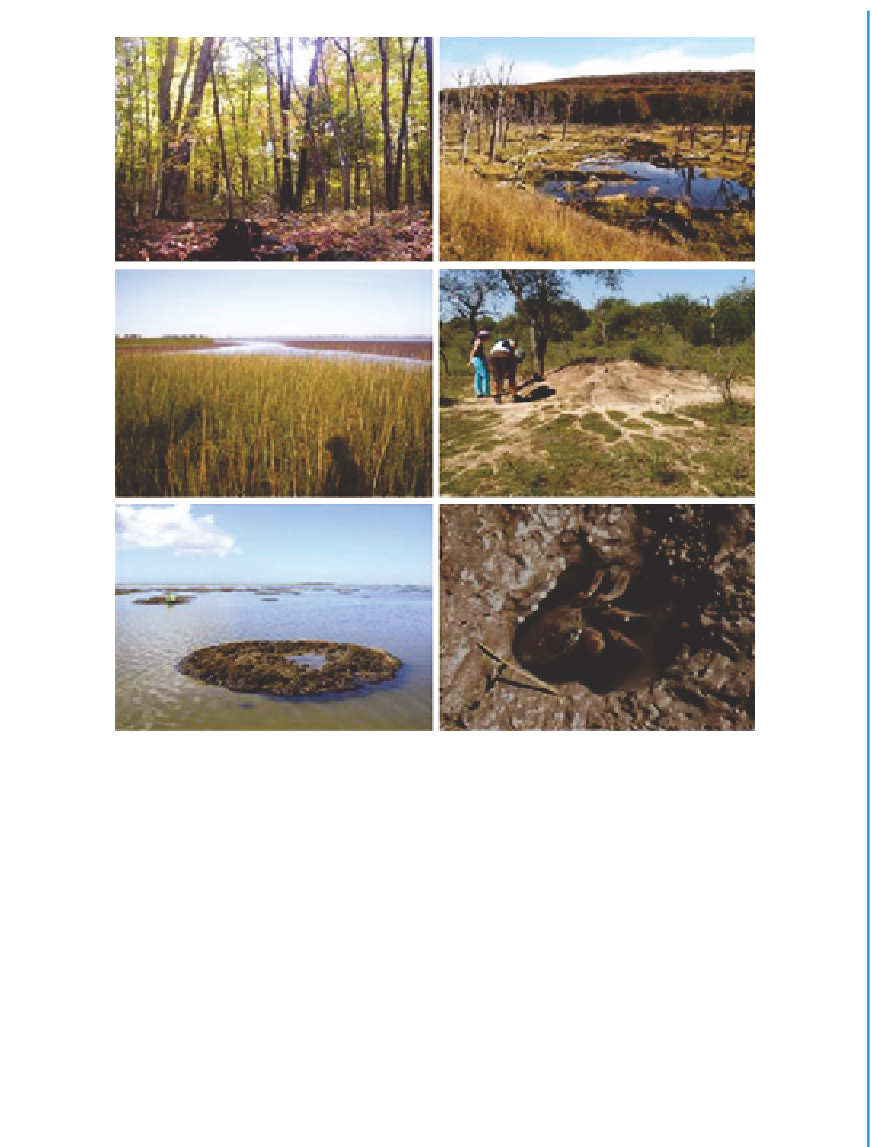Environmental Engineering Reference
In-Depth Information
(a)
(d)
(b)
(e)
(c)
(f)
FIGURE 11.2
Autogenic (a, b, c) and allogenic (d, e, f) ecosystem engineering. (a) Oak (Quercus
rubra) forest near Millbrook, NY, changes microclimate and affects soil biogeochemistry and under-
story species. (b) Smooth cordgrass, Spartina alterniflora, in a tidal marsh in the La Plata estuary
near Playa Peninos, Uruguay. The marsh attenuates storm surges, increases sedimentation, and
retains organic matter affecting biogeochemistry and creating protected habitat for other species.
(c) Reefs of tube-building polychaetes, Ficopomatus enigmaticus, an exotic species in Mar Chiquita
coastal lagoon, Argentina. The reef in the foreground is ca. 3 meters across, and it alters hydrody-
namics and increases sedimentation, providing shelter for many invertebrates. (d) Riparian forest
area transformed by the dam-building activity of beaver, Castor canadensis,inTierradelFuego,
Chile, where it is an exotic species. The dam alters hydrology, sedimentation, and light levels and
so affects biogeochemistry and species habitats. (e) Mound made by leaf-cutting ant, Atta sexdens,
in the “blanqueal” area near Fray Bentos, Uruguay; ants bring saline soil from depth to the surface,
eliminating most vegetation on the mound. (f) The Southwestern Atlantic burrowing crab, Neohelice
(Chasmagnathus) granulata, in Mar Chiquita coastal lagoon, Argentina, buries litter in excavation
mounds and prevents litter export as a nutrient subsidy to adjacent estuary. (Photos: (a) Jorge
Guti
´
rrez; (b) Cesar Fagu
´
ndez; (c) Martı
´
n Bruschetti; (d), (e) Clive Jones; (f) Pablo Ribeiro. From
Guti
´
rrez and
Jones 2008
.)



